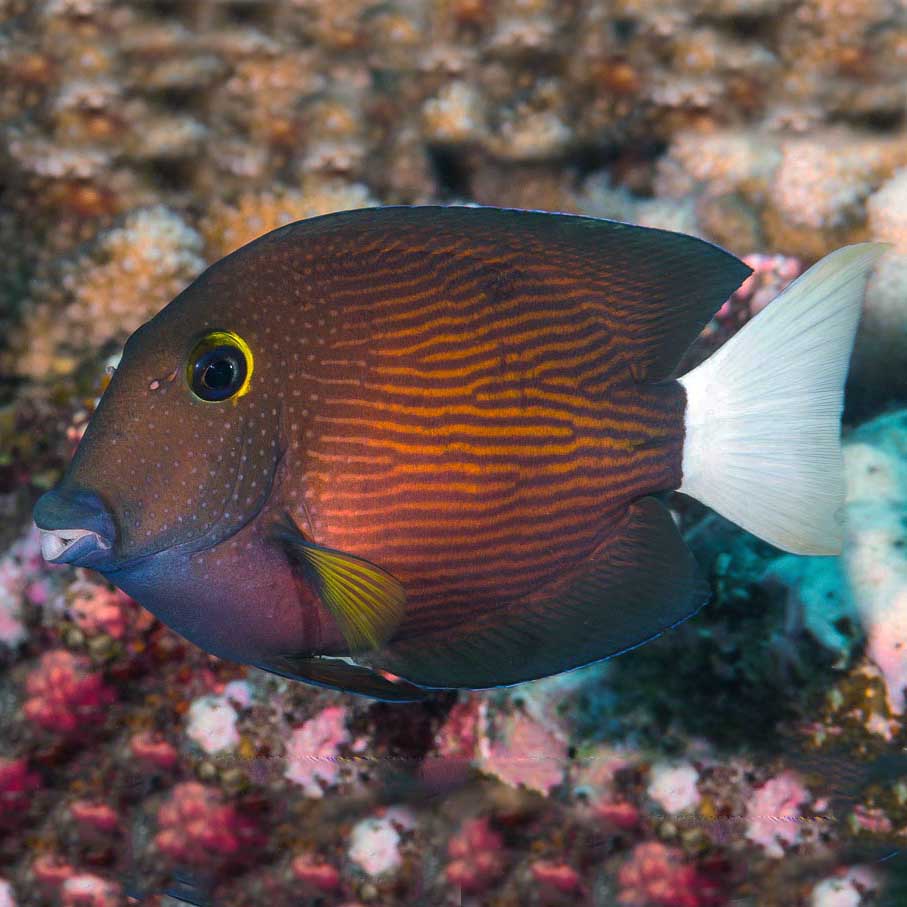White Tail Tang Fish
The White Tail Tang Fish - A Vibrant and Popular Choice for Saltwater Aquariums
Are you searching for a stunning and active fish for your saltwater aquarium? Look no further than the White Tail Tang. These beautiful fish are known for their distinct yellow bodies, white tails, and stunning blue eyes. While they may be a popular choice for aquarium enthusiasts, white tail tang fish require specific conditions in their environment to thrive.
Without a doubt, one of the biggest pain points for owners of white tail tang fish is maintaining the appropriate water quality. These fish require highly oxygenated water and can be sensitive to fluctuations in water conditions. Additionally, they are known to be aggressive towards other fish and can become territorial in smaller tanks.
So, what makes the White Tail Tang such a desirable choice for aquarium keepers? Not only do they add bright color and movement to your tank, they are known for their active behavior and ability to clean algae from the tank. Their personalities are both entertaining and rewarding to watch as they swim, eat, and interact with their surroundings.
Overall, the White Tail Tang is a fantastic choice for saltwater aquariums, but only for dedicated and experienced owners who can provide them with the necessary environment and conditions.
A Personal Experience with White Tail Tang Fish
As a seasoned aquarium owner, I was drawn to the White Tail Tang for their unmatched beauty and active nature. One particular white tail tang in my aquarium, named Sunny, quickly became the star of my tank. Sunny would playfully swim up to the glass peering at onlookers, and was always the first to greet me when I entered their surroundings. However, I quickly learned the importance of maintaining a clean and stable environment as Sunny became ill from minor fluctuations in the water quality. With diligent attention and care, I was happy to nurse him back to health, and Sunny remained a cherished part of my aquarium family for many years.
Caring for White Tail Tang Fish
To properly care for white tail tang fish, provide a tank that is at least 75 gallons in size with plenty of open swimming space. Ensure that the aquarium has a tight-fitting lid to prevent any jumping incidents, and a lot of hiding spaces that will allow your fish to take breaks from any stressors. White tail tang fish are herbivores and require a diet mainly of vegetable matter, such as seaweed, and quality commercial food that meets their dietary requirements.
Creating a Healthy Environment
Creating a healthy environment for white tail tang fish is key to their survival. These fish require a stable temperature of around 75-79 degrees Fahrenheit, and pH levels between 8.1-8.4. They also need a constant flow of highly oxygenated water that is well-filtered, as well as regular water changes to maintain optimal water quality. Monitoring the water temperature and quality daily, as well as adjusting filtration and lighting as needed, is essential to their health and well-being.
Compatibility with Other Fish
White tail tang fish can become highly territorial and possessive of their surroundings and preferred algae grazing spots. They are also known to be aggressive, especially towards others of their own kind. It's recommended to keep only one white tail tang in a tank, or to add other fish after introducing the white tail tang first and allowing them to establish their territory.
Question and Answer Section
1. Do white tail tang fish need a lot of open swimming space?
Yes, it's recommended to provide a tank that is at least 75 gallons in size with plenty of open swimming space.
2. What is the ideal temperature for white tail tang fish?
The ideal temperature for white tail tang fish is around 75-79 degrees Fahrenheit.
3. Can white tail tang fish be aggressive towards other fish?
Yes, white tail tang fish are known to be aggressive, especially towards others of their own kind. It's recommended to keep only one white tail tang in a tank or to add other fish after introducing the white tail tang first and allowing them to establish their territory.
4. What do white tail tang fish eat?
White tail tang fish are herbivores and require a diet mainly of vegetable matter, such as seaweed, and quality commercial food that meets their dietary requirements.
Conclusion
The White Tail Tang Fish is a gorgeous and lively choice for any saltwater aquarium, but they require special care and attention to maintain optimal health. By providing them with a stable and healthy environment, quality food, and regular attention to their water quality, the White Tail Tang fish can thrive in your aquarium for years to come.
Gallery
White Tail Tang "Ctenochaetus Flavicauda" – 1 Fish 2 Fish Dartmouth

Photo Credit by: bing.com / tang tail ctenochaetus dartmouth fish
Image Result For White Tail Tang | Fish Pet, White Tail, Pets

Photo Credit by: bing.com / bristletooth saltwater reef2reef
White Tail Kole Tang (Ctenochaetus Flavicauda) | Marine World Aquatics

Photo Credit by: bing.com / tang tail kole ctenochaetus fish bristletooth
White Tail Tang Fast Professional Service Abyss Aquatics

Photo Credit by: bing.com / tang tail last time
White Tail Tang | Pet Fish, Ocean Animals, Saltwater Fish Tanks

Photo Credit by: bing.com / tang